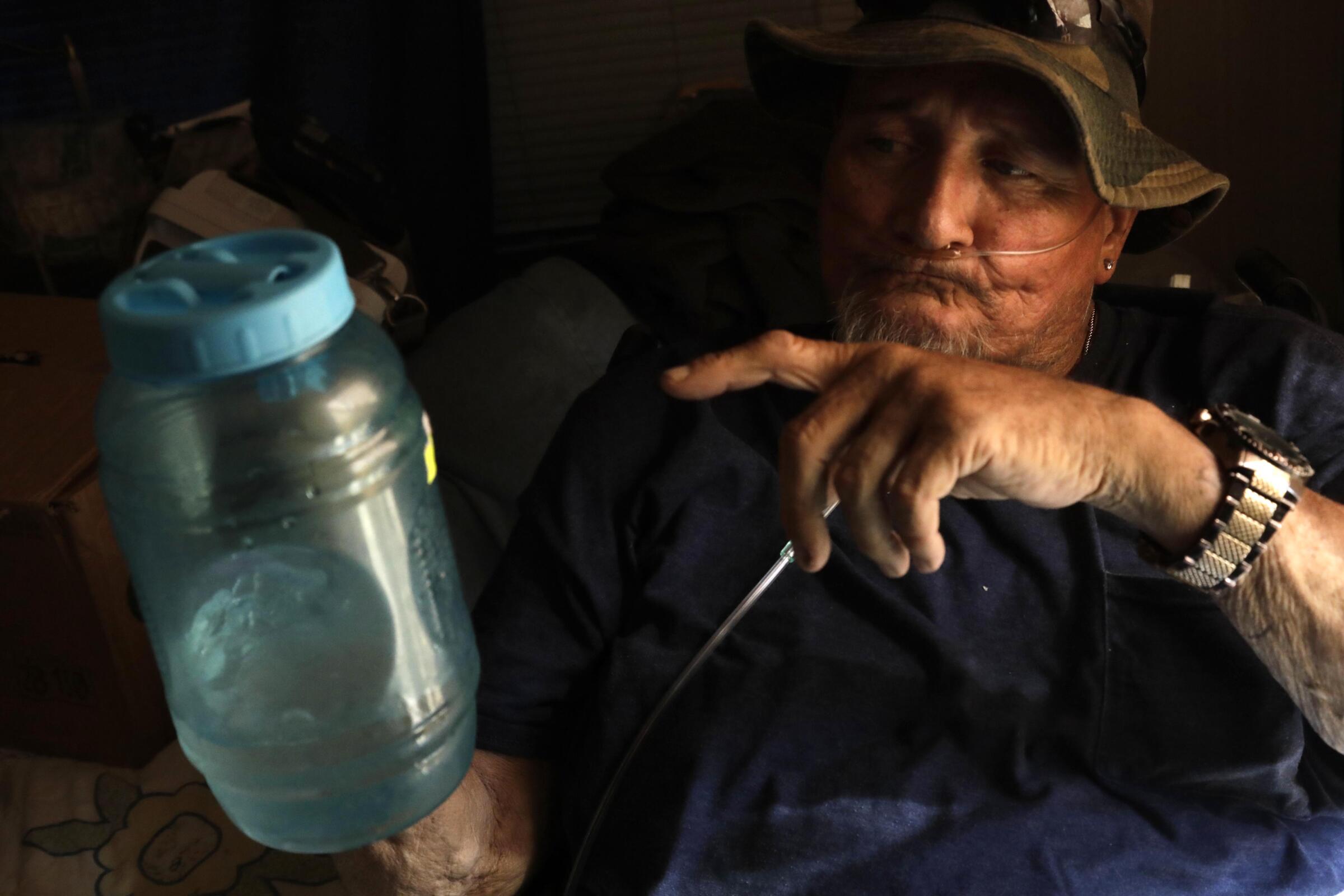Sign up for Essential California
The most important California stories and recommendations in your inbox every morning.
You may occasionally receive promotional content from the Los Angeles Times.

Extreme heat is one of the deadliest consequences of global warming.
But in a state that prides itself as a climate leader, California chronically undercounts the death toll and has failed to address the growing threat of heat-related illness and death, a Los Angeles Times investigation has found.
California chronically undercounts the death toll from extreme heat, which disproportionately harms the poor, the elderly and others who are vulnerable.
Reporters Anna M. Phillips, Tony Barboza, Ruben Vives and Sean Greene, working with health data analyst Logan Arnold, found that heat likely caused about 3,900 deaths over the previous decade — six times the state’s official tally. This undercounting, they wrote, has contributed to California’s lack of urgency in confronting a public health crisis that is only getting worse.
California has done a poor job tackling a public health crisis that is only getting worse with climate change.
People’s risk of heat-related illness and death is also a product of the built environment around them. The amount of paved surfaces and tree cover where they live and work, the quality of their housing and their ability to pay to cool their surroundings can make the difference between death or mere discomfort.
The unequal distribution of cooling infrastructure in Los Angeles and other cities is a big reason the health impacts of worsening heat waves fall disproportionately on the poor and communities of color while those with money and privilege remain relatively shielded from the problem — by trees and parks, better housing and the power to crank up the air conditioning whenever they want.
Paved surfaces, tree cover, and home construction quality can make the difference between heat waves being an inconvenience or a threat to your life.
Extreme heat is endangering California warehouse workers, who often labor without air conditioning.
Fueled by customers’ growing addiction to one-day delivery and a pandemic-driven surge in online shopping, demand for warehouses has skyrocketed.
As land near major ports and cities becomes scarcer and pricier, developers are heading deeper into the Inland Empire and the Central Valley, where temperatures are rising faster than in coastal communities. Low-wage workers, most of them Black and Latino, are facing increased risks as they follow the job boom to some of the hottest parts of California, into warehouses that industry experts say are mostly not air-conditioned.
Federal data show that poor families have a far lower rate of air conditioning units in their homes than the average, and even when they have AC, they are reluctant to use it, or get equipment fixed due to costs. As heat waves intensify and become more frequent, AC can be the difference between life and death.
Utilities have funds available to install air conditioning in low-income households, but for one California family, help did not come soon enough.
Climate change is transforming the character of the West’s hottest periods — making them more frequent, more persistent, more humid and more lethal.
Experts say this shift in heat waves should prompt changes in emergency notifications and public health response to keep the death toll from rising. But that isn’t happening.
California’s worst heat waves arrive in a one-two punch — high temperatures combined with humid air from Baja.
With climate change triggering increasingly severe heat, Californians need to prepare themselves for temperature extremes, just as they do for earthquakes and other disasters.
Here’s what you need to know about heat-related illnesses. How can you identify, treat and prevent them?
What are heat-related illnesses and how are they treated? Are they preventable or inevitable? We talked to health experts for the answers.
The governor has released guidelines following a Los Angeles Times investigation into California’s failure to address heat-related deaths.
The Times has more coverage about extreme heat and climate change coming.
Subscribe to our newsletter Boiling Point so you don’t miss a story:
Toward a more sustainable California
Get Boiling Point, our newsletter exploring climate change, energy and the environment, and become part of the conversation — and the solution.
You may occasionally receive promotional content from the Los Angeles Times.
Sign up for Essential California
The most important California stories and recommendations in your inbox every morning.
You may occasionally receive promotional content from the Los Angeles Times.